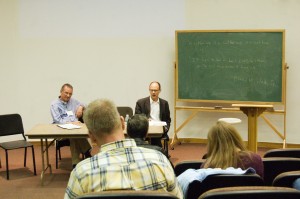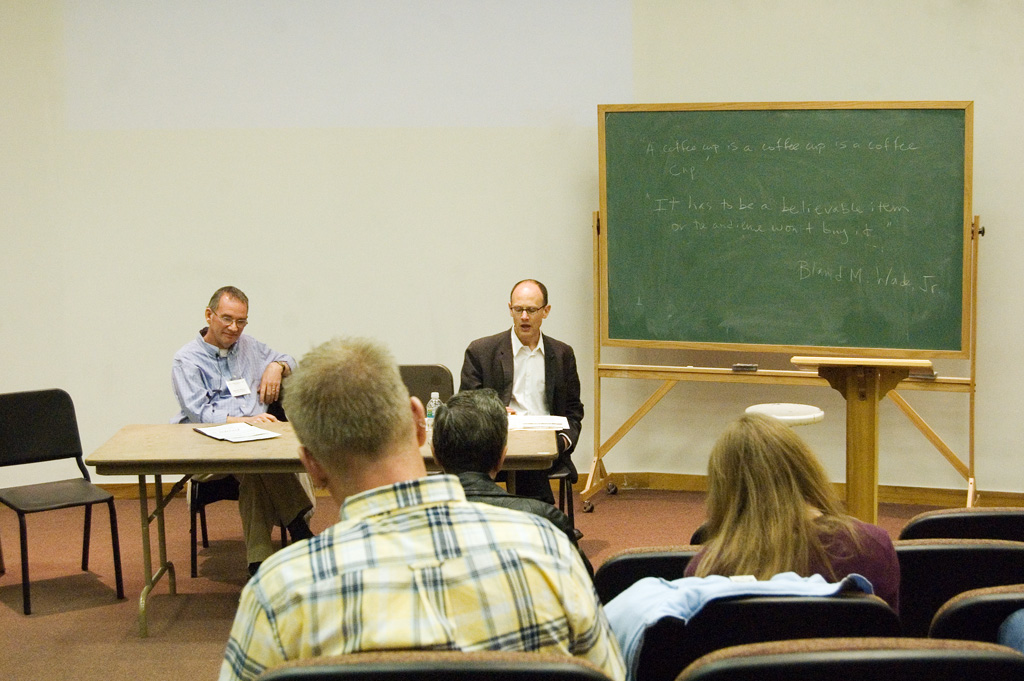
By the end of the 2009 SETC Theatre Symposium, which focused on theatre props, I felt like my brain was full. We heard so many good papers on all aspects of props, from their use by playwrights, their practical application and construction, their historical iterations, and their perception by the audience.
A coffee cup is a coffee cup is a coffee cup
Andrew Sofer began his closing remarks by pointing to a statement Bland Wade had made earlier in the conference: “It has to be a believable item or the audience won’t buy it.” Sofer was struck by Wade’s use of the word “believable” rather than “realistic.” A prop director can find research for an obscure but completely historically accurate object, but if it is out of the realm of what the audience is expecting, they will not believe it. Likewise, we often have to work in more constructed worlds on stage, where time periods are mixed or elements are completely fabricated from imagination, but we still have to provide props which the audience will accept. A prop director’s role is constrained by the audience’s need for mimetic realism.
The Joy of Labor
In regards to the paper I presented, Sofer pointed out the joy of labor and the audience’s appreciation of it. Often, the academic world will focus so much on the meaning of signs and symbols in props that they overlook the audience’s simple joy at seeing well-produced theatre. When props (or any other design element) are well-constructed, meticulously-crafted, and, for lack of a better word, “cool”, the audience has a deeper reaction to the play.
Continue reading Closing Remarks at 2009 SETC Theatre Symposium

